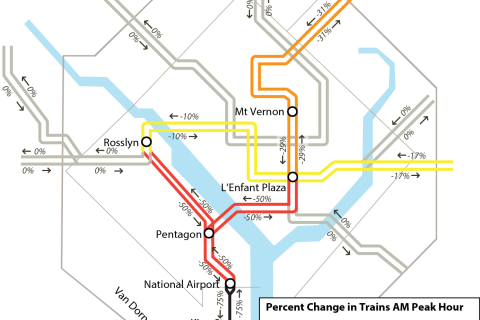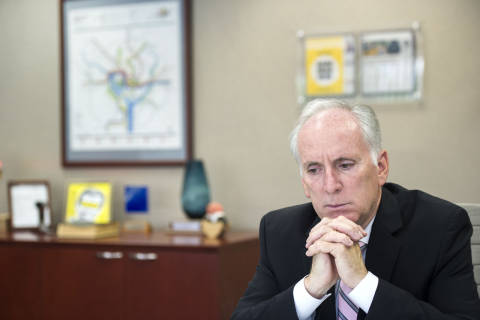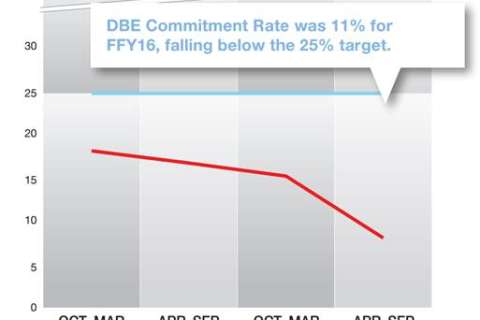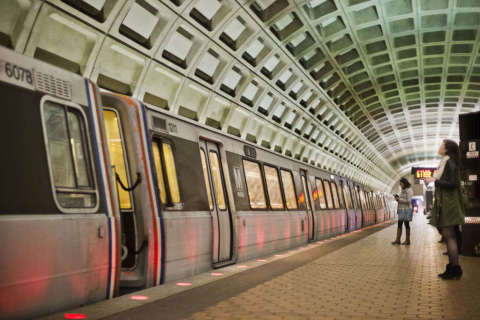WASHINGTON — Metro rushed into round-the-clock track work due to urgent safety concerns, as well as a threat in May that the Federal Transit Administration might order the entire system shut down over smoke and fire problems, a Government Accountability Office report confirmed Tuesday.
The report, requested by the House Oversight Committee, found Metro did not have detailed information about the condition of its rail system beyond the crumbling crossties on main tracks, which is a major reason the 24/7 work zones are mainly dedicated to replacing those crossties. The missing information included the conditions of electrical cables and the conditions of interlockings – sections where trains cross from one track to another, like the one where a train derailed near East Falls Church in July.
Metro had developed three options for the track work plan: one that ran eight months, another 10 months and a third 22 months. The report found Metro could have done more to analyze the full impacts of the plans — on the work that could be done and on riders.
“In particular, WMATA did not quantify the effects of the various alternatives on extending the life of the track assets, on reducing maintenance costs, and on Metrorail ridership. WMATA also did not quantify the costs or establish a detailed budget for its alternatives and still has not determined the final funding sources for its selected alternative,” the report said.
The Metro Board did approve budget changes to cover the costs, but did not specify where the additional money would come from.
More planning needed
The non-partisan GAO found that Metro should have had a more comprehensive planning process, and should create better policies to plan any similar large-scale projects in the future.
Metro is now trying to figure out the actual conditions of everything it owns, after the agency acknowledged in 2015 that it could not trust the information in its internal inspection databases.
“By not following these leading practices, WMATA lacks assurance that the accelerated approach taken with SafeTrack is the most effective way to identify and address safety issues,” the report said.
Metro generally agreed with the findings that the agency should use more detailed data to figure out what work should be done on any future large scale projects, better evaluate and compare alternative options, and institute a policy requiring comprehensive management plans for those big projects.
General Manager Paul Wiedefeld said in an official response to the report that Metro is working on improvements, including a new project planning office.
Wiedefeld claimed in the letter, however, that the report did not clearly show the urgent need for Metro’s immediate repairs.
“The report does not clearly express the true level of crisis the agency was facing almost one year ago,” Wiedefeld wrote. “We did not have the luxury of time to pull together a large project management plan.”
The Federal Transit Administration has yet to approve Metro’s project management plan, which was not even prepared until months after the round-the-clock track work began.
Praise for lessons learned
Metro won praise in the report for learning lessons from each surge zone that it attempts to implement in following ones. Among the examples, Metro now more clearly defines the start and end points of each work zone and the expectations of what will get done during the shutdowns.
Internal Metro quality control inspections after surges have identified hundreds of so-called “punch-list” items for follow-up. Of the 413 problems identified in the first eight surges, 28 were safety-related.
The report says, though, that Metro must do more to get full information about what is and isn’t working in the system to correctly prioritize $56 million in track rehabilitation projects planned for the fiscal year that begins in July.
“If WMATA were to make decisions about the scope and prioritization of these projects without full information about the various alternatives, it may not select an approach that best balances costs and impacts,” the report said.
The rushed nature of the 24/7 work planning also meant very little communication at first with riders and regional governments who needed to plan alternatives. Regional leaders interviewed by the report’s authors say that has improved in recent months.
While the track work has reduced safety risks to riders and workers in the system, the Federal Transit Administration has found that Metro still faces organizational and operational problems that limit the transit agency.
The GAO report also confirms that the Federal Transit Administration directed Metro to add the surge zone on the Orange Line, between New Carrollton and Minnesota Avenue, that is now scheduled for May and June.








